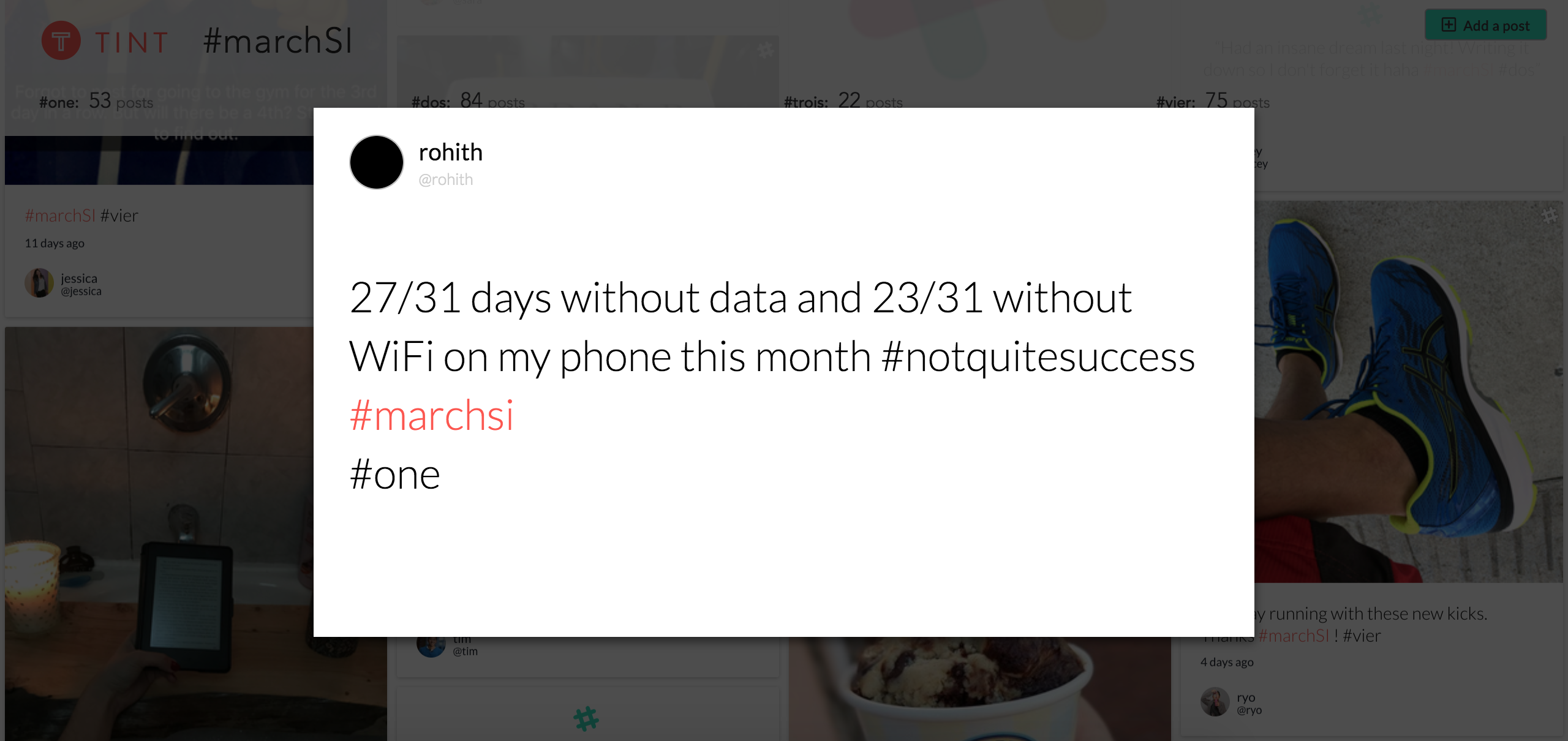My first day at my new startup job, Tint flew me from San Francisco to New York City for a business trip with the entire company, included me in a meeting with the Red Cross of Greater New York where we brainstormed how to use Tint for their upcoming gala, brought me to NASDAQ headquarters to watch the commissioner of Major League Soccer ring the closing bell, and put my face on an enormous jumbotron in Times Square.
My coworkers assure me that this was not a normal day.
But I’m still elated. Because the jumbotron and the cross-country flight are not what make me most excited to work at Tint. It is the radical company culture of autonomy and trust, and the warm embrace of new ideas. It’s startup culture at its finest. Creating an environment like this is more difficult than putting someone’s face on a roughly $1,000/minute jumbotron, and more valuable too.
Most Companies Aren’t Like This
Last December, I moved across the country from Washington D.C. to San Francisco. I left behind a fast-paced internship writing for a think tank and my large network of friends and professional contacts. In my new city, I had none of those things.
This May, as my first year out of school drew to a close, my view of the working world and my place in it was cynical. I spent my weekdays indoors at my temporary place of employment – the marketing department of an educational institution with grey cubicles and a large dysfunctional bureaucracy. I had no autonomy. I shut my brain down and did my work. I missed the sun. I read articles about the decreased happiness and lifetime earnings of those who graduate during a recession. I started to wonder if this is what it is like to be an adult. Get your work done, get your paycheck, dream of the weekend, go home.
Then Tint saved me.
If this sounds overwrought, you must understand how astoundingly different Tint is in its approach to getting its work done. Though many organizations talk about output-based incentives, rather than time-based incentives, few manage to implement it as effectively as Tint. Ironically, this means that Tint team members tend to put in more hours, not less.
Flat Structure and Close Communication Make a Powerful Team
The term “team members” is absolutely accurate. My new colleagues and friends at Tint don’t view themselves as employees, but as teammates. With a relatively flat structure and open working environment, everyone is on the team, working towards the same goals, picking up each other’s slack and sharing workloads. One happiness team member told me, “I don’t mind putting in long hours or working late. I want to do it.” An intern on the development team told me “It just doesn’t feel like work. It’s so fun.”
Is selling a product fun? Is coding? Not always.
But TINT has a structure and a working environment makes work something to look forward to.
Part of TINT’s effectiveness is due to the small size of the team, which allows for the flat structure and close communication between all team members. At any given moment, a member of the Happiness team is aware of all of our customers, all of our accounts. Any demo request or help ticket that comes in goes to all members of the team, and any individual is qualified to answer it or assign it to someone who can.
Who knows how feasible this will be if TINT quadruples in size. But even as TINT grows, I know that the company will maintain their expectation of autonomy, trust, and transparency. Team members are encouraged to “ask for forgiveness rather than ask for permission,” and to put trust at the center of the relationship with each other and with employees.
Radical Honesty Means Better Relationships with Customers
The recent Comcast debacle involving the leaked recording of one man’s attempt to cancel his service highlighted how bad bad customer service can be for a company. Though it is easy to mock the Comcast employee for his badgering, Elise Hu from NPR hypothesizes that the heart of the problem is Comcast’s company culture. Likely, the agent on the other end of the call was being paid more if he kept the customer, with little value placed on how the customer was treated. His goal, therefore, was not to develop a personal relationship with the customer, nor was it to help the customer in the best way possible. His goal was to prevent the customer from canceling his plan, at any and all costs.
At Tint, we have a Happiness team, not a sales team. Though the distinction may sound trite or goofy, its not. I’ve watched several members of the happiness team council businesses with utmost sincerity to stick with their current plan, rather than upgrading. They don’t try to upsell organizations to a Tint plan that they don’t need. At times, they will tell a potential customer that Tint is not right for their needs. The result?
Our customers trust us to tell them the truth. They know we will be there at late hours to help them solve their problems, even if it doesn’t mean more money for us. And at the end of the day, we develop a personal relationship with our customers, where we can work together and brainstorm uses for this powerful tool. At times, it feels as though we’re consultants, who happen to have a product too.
So how do you find or build a company culture like this?
If your current company doesn’t value independent work, honesty or new ideas, you have two options. You can find a new company that does, or you can push your old company to change. For me, the valuable realization is that company culture matters more than other things – salary, for example.
If you want to create an open, team-oriented environment in your existing company, TINT’s five company values might be a good place to start. However, listing values on a webpage is not enough. It has to permeate the workplace, until working hard without oversight or concrete direction is second nature.
Someday (hopefully far away), I will move on from Tint. But you can bet your buttons that when I look for my next dream job, it will not be based on whether I get to fly across the country or see my face on a jumbotron. That’s just a bonus. It will have to do with how a company values its workforce and views its role in the world.
Creating a company culture like this is hard.
And absolutely worth it.





